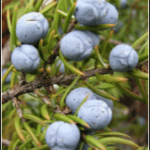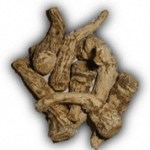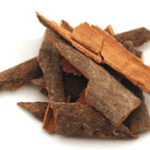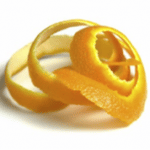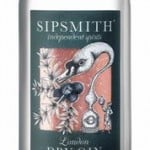Gin
- Introduction
- Types
- How to Drink
- Food Pairing
- Gin Brands
- Cocktails
- GUEST COLUMN
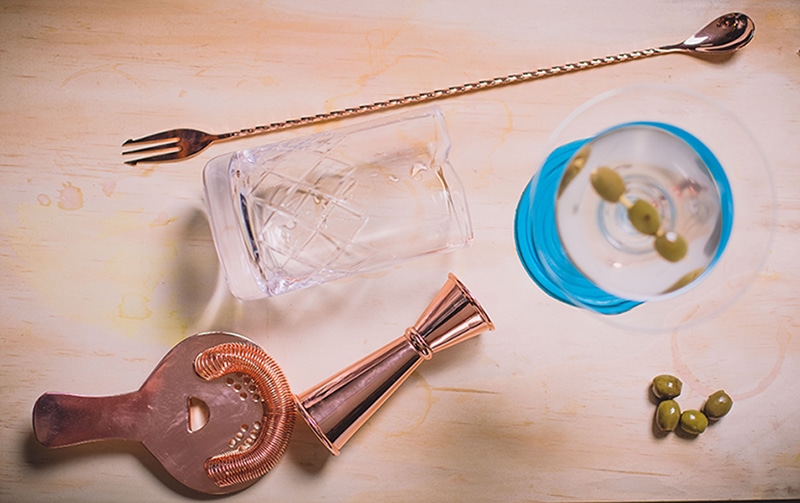
Introduction
Gin is often regarded as the most specifically `English’ of all spirits, and they did drink an awful lot of the stuff, but gin is, in fact, a creation of the Netherlands. It is believed that an apothecary, possibly in the sixteenth century, re-distilled a neutral spirit with juniper berries for medicinal purposes – to use as a `diuretic’ and in all probability as a `cure-all’ potion as they were wont to in that era.
An English legend tells of how their troops, sent to the Low Countries by Queen Elizabeth in 1585 to fight against Philip of Spain, came back marveling at the `Dutch courage’ shown by their partners-in-war, and carrying it with them in `bottles’! The English soon began distilling it themselves. A century later, in 1688, with the accession of the Dutch Prince, Willem III of Orange to the English throne, gin became truly the patriotic spirit to drink.
Gin is a clear spirit typically made from barley, maize or molasses. It is then flavoured with ‘botanicals’ – a secret combination of ingredients that differs from one manufacturer to the next, but always includes juniper berries – genièvre in French –, which give the drink its name. Other aromatic ingredients can include coriander, citrus peel, anise, angelica root, orris root (from the iris flower family), liquorice root, cinnamon, cassia bark (a relative of cinnamon) and more.
Types
English dry gin / Dutch Genever (Jenever/ Holland Gin) / Plymouth / Sloe
- London dry gin, the world’s most popular gin type, is rarely made in London and is dry in the sense that it lacks sugar to make it sweet. It tend to be high in alcohol — 90 proof (45 percent alcohol by volume, or ABV) — with a characteristic citrus flavor and aroma due to the widespread addition of dried lemon and/or orange peels to the botanical recipe.
- Dutch gin, generally known as Holland gin (genever at home) differs quite radically from English gin, both in flavour as well as the way in which it is drunk. Holland gin is heavier and more flavourful as it is distilled along with its aromatic ingredients unlike London gin, which is lighter, drier and subtly flavoured. The aromatics (juniper berries, coriander, citrus peel, etc., in secret combinations specific to individual brands) are steeped in a neutral spirit and not distilled to achieve its distinctive flavour.
- Plymouth gin is a type of gin, which is geographically protected and can be distilled only in Plymouth.
- Sloe Gin is not exactly a type of gin; rather it is a gin based liqueur. It is flavoured with black thorn berries, which are often popularly referred to as Sloe Berries.
How to Drink It
The Dutch drink gin like the Russians drink vodka-ice-cold and neat, with fishy hors d’oevres. The Brits drink it in cocktails and tall drinks. In India, we drink it in Martinis or most usually, with tonic water and a slice of fresh lime. We also suggest you could drink it on the rocks with a twist of lime.
The characteristic bitterness of a gin-and-tonic comes from quinine, a chemical originally added to tonic water by the British to ward off malaria in India and Africa. They added gin to make the tonic water more palatable. Quinine also glows eerily under UV or ‘black’ light – the next time you’re having a party, get a couple of black lights and impress your guests with glow-in-the-dark drinks.
Popular cocktails using Gin include Dry Martini, Bronx, Gimlet and the Singapore Sling. Click here to see a list of all Gin based cocktails on our website.
Food Pairing
- Gin is a good drink as an appetizer.
- A classic dry martini will work well with salty appetizers or oysters!
- A gin on the rocks will pair well with seafood salads with fresh crisp vegetables.
- A Gin & Tonic work well with spicy Asian cuisine. The aromas in gin and the bittersweet taste of tonic water offsets the zingy spiciness of Asian food.
- Gin will also work well as a marinade for saltwater fishes with a herb marination
Gin Brands
Bombay Sapphire
Bombay Sapphire is a unique and fine gin producing company. Most of the gins extract flavours by directly boiling botanicals with spirits, while the taste of Bombay Sapphire is created through the vapour Infusion process. 10 different types of botanicals are used to get complex aromatic spirit, which offers floral and herbal aromas.
Beefeater
It is the only premium London Dry Gin that is still distilled in London. It is a fresh, crisp and clean gin with hints of citrus fruits. Other 2 variants are Beefeater 24 and Beefeater Burrough’s Reserve.
Gordons
In 1769, Alexander Gordon founded his world famous distillery in the Southwark area of London. Gordon is a London Dry gin made with the finest juniper berries and selected botanicals. The strength of the juniper gives Gordon’s the classic gin taste.
Booths
It is a London Dry Gin produced by Booths family in 1740. Booth’s is the Queen’s favourite tipple and each bottle carries her royal crest of appointment. To be genuine Booth’s, each bottle carried the Red Lion and the Booth’s Distillers signature!
Coates Plymouth Gin
Soon after Coates & Co began in 1793, Plymouth Gin became a firm favourite in the numerous countries it was shipped to. Gin drinking of the Royal Navy considerably enhanced gin’s prestige as it climbed the ladder of respectability in Victorian times. By 1850 Coates & Co were supplying over 1000 barrels of ‘navy strength’ 57% abv gin a year to the Royal Navy. They were fond of mixing it with Angostura bitters or lime for ‘medicinal’ purposes. Thanks to the British Royal Navy taking it on ships all over the world, it was to become the world’s largest volume brand of gin with 1000 cases a week going to New York alone by the 1900’s.
In 1896 the first ever recipe for a Dry Martini specified Plymouth Gin (in Stuart’s Fancy Drinks and How to Mix Them) and by the 1930’s Plymouth Gin was the star of the cocktail era. It is the only gin still around today to be named in numerous recipes in the renowned Savoy Cocktail Book – still the bible of mixology.
Hendricks
The Wall Street Journal declared Hendrick’s as the Best Gin of the World in 2003. Hendrick’s Gin is infused with Rose and Cucumber in a remote Scottish distillery. Small batches of Hendricks are made so that the master distiller has greater control on her recipe. It’s a very unusual Gin with dark bottle. Gin was an afternoon drink in the Scottish land. That’s Hendrick’s still follows.
Tanqueray
It starts with the man. Charles Tanqueray. The bold spirit who traded the church for the still and in the process, created one of the world’s most awarded gins. The signature red waxed seal on the bottle is the official stamp of Tanqueray quality passed through generations. The pineapple featured on the Tanqueray crest is a traditional symbol of hospitality, quality and discernment.
Tanqueray No.10
Born in the elegant 10th still, with a pioneering spirit and attention to detail that embodies the craft and passion of Charles himself, we affectionately bring you Tanqueray No. Ten Gin. A simple marriage really. A little craft, a lot of fruit and the citrus shines.
Tanqueray Rangpur
Tanqueray Rangpur Gin unveils the best kept secret of the British-Indian tradition. The rare Rangpur lime traditionally used to smooth down the gin brings an exotic bold flavour to the already perfect combination of Juniper, Coriander, Bay leaves and Ginger.
Sipsmiths
Distilling our gin involves carefully balancing a whole host of aromatic botanicals to create a drink that is dry, spicy and full of character. In this process, Prudence (our still) bypasses the distillation column to retain the intensity of the botanicals. It is one of the only gins in the world made using the traditional ‘one-shot’ method, rather than as a concentrate. Our botanicals are carefully sourced from all over the globe. They’re a cosmopolitan mix but traditional at the same time. There is nothing here that would surprise a master-distiller from the nineteenth century. We make our spirits by hand in genuinely small batches – just a few hundred bottles a time. We passionately believe this is the only way to craft spirits of this quality. Inspired by the two hundred years of London distilling history we have inherited, we balance modern technology with traditional recipes and techniques. We like to think that old meets new and the two get on really quite spectacularly.
G’Vine
Gin de France, is the first gin made from grape spirit and crafted with 10 botanicals, starring the rare vine flower. The grape base of G’Vine is unique to the gin family.
While most gins are made from grain, G’Vine is crafted with grape spirit, as were the very first historical juniper spirits in France, Belgium and Holland back in the 13th century.
Unlike the traditional grain spirit associated with Gin production, the neutral grape spirit is much smoother and more suave with a heady body and feeling new to the palate. It is the perfect canvas for any botanical to print its complex delicacy.
